Meg Young
"Ownership, Not Just Happy Talk": Co-Designing a Participatory Large Language Model for Journalism
Jan 28, 2025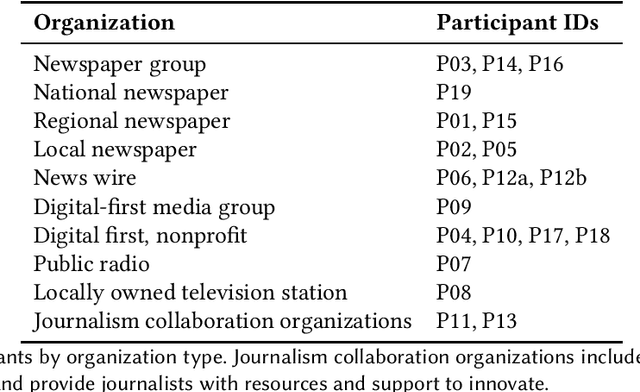
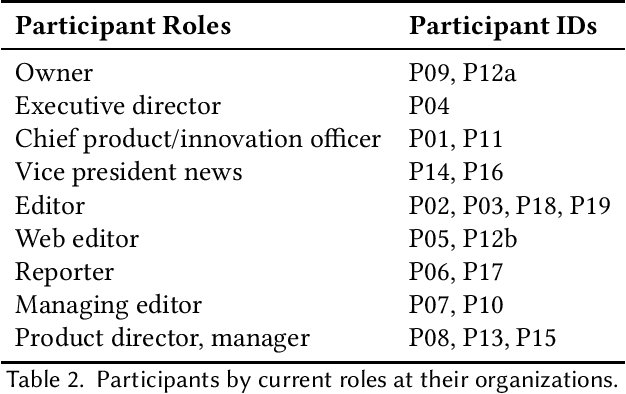
Abstract:Journalism has emerged as an essential domain for understanding the uses, limitations, and impacts of large language models (LLMs) in the workplace. News organizations face divergent financial incentives: LLMs already permeate newswork processes within financially constrained organizations, even as ongoing legal challenges assert that AI companies violate their copyright. At stake are key questions about what LLMs are created to do, and by whom: How might a journalist-led LLM work, and what can participatory design illuminate about the present-day challenges about adapting ``one-size-fits-all'' foundation models to a given context of use? In this paper, we undertake a co-design exploration to understand how a participatory approach to LLMs might address opportunities and challenges around AI in journalism. Our 20 interviews with reporters, data journalists, editors, labor organizers, product leads, and executives highlight macro, meso, and micro tensions that designing for this opportunity space must address. From these desiderata, we describe the result of our co-design work: organizational structures and functionality for a journalist-controlled LLM. In closing, we discuss the limitations of commercial foundation models for workplace use, and the methodological implications of applying participatory methods to LLM co-design.
Participation in the age of foundation models
May 29, 2024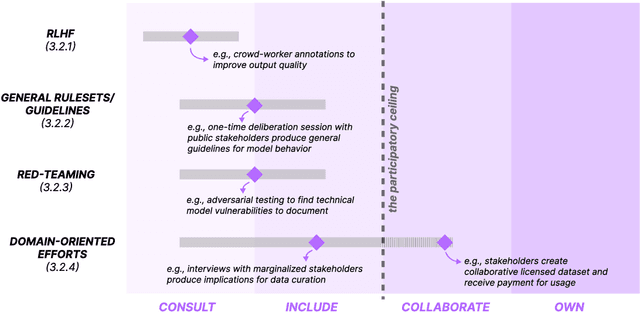
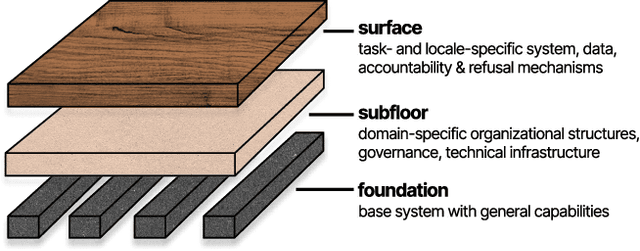
Abstract:Growing interest and investment in the capabilities of foundation models has positioned such systems to impact a wide array of public services. Alongside these opportunities is the risk that these systems reify existing power imbalances and cause disproportionate harm to marginalized communities. Participatory approaches hold promise to instead lend agency and decision-making power to marginalized stakeholders. But existing approaches in participatory AI/ML are typically deeply grounded in context - how do we apply these approaches to foundation models, which are, by design, disconnected from context? Our paper interrogates this question. First, we examine existing attempts at incorporating participation into foundation models. We highlight the tension between participation and scale, demonstrating that it is intractable for impacted communities to meaningfully shape a foundation model that is intended to be universally applicable. In response, we develop a blueprint for participatory foundation models that identifies more local, application-oriented opportunities for meaningful participation. In addition to the "foundation" layer, our framework proposes the "subfloor'' layer, in which stakeholders develop shared technical infrastructure, norms and governance for a grounded domain, and the "surface'' layer, in which affected communities shape the use of a foundation model for a specific downstream task. The intermediate "subfloor'' layer scopes the range of potential harms to consider, and affords communities more concrete avenues for deliberation and intervention. At the same time, it avoids duplicative effort by scaling input across relevant use cases. Through three case studies in clinical care, financial services, and journalism, we illustrate how this multi-layer model can create more meaningful opportunities for participation than solely intervening at the foundation layer.
* 13 pages, 2 figures. Appeared at FAccT '24
Defining AI in Policy versus Practice
Dec 23, 2019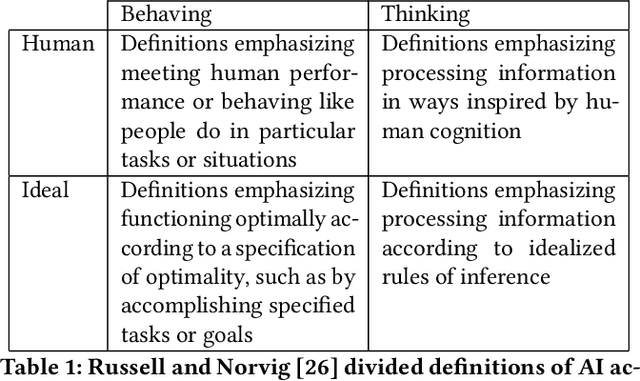
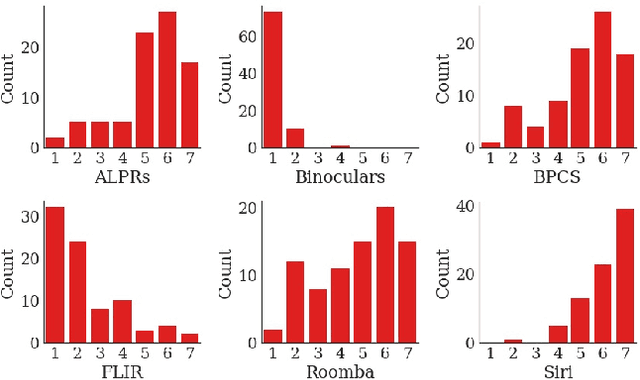
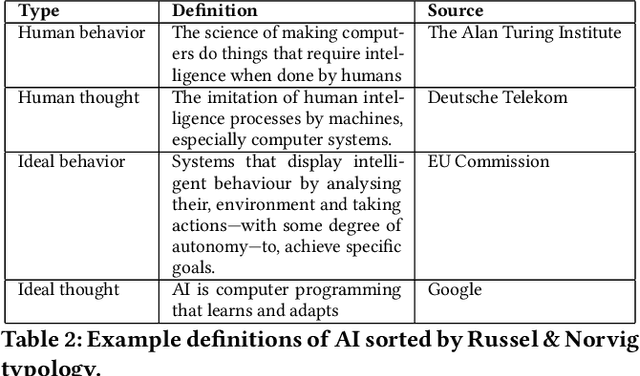
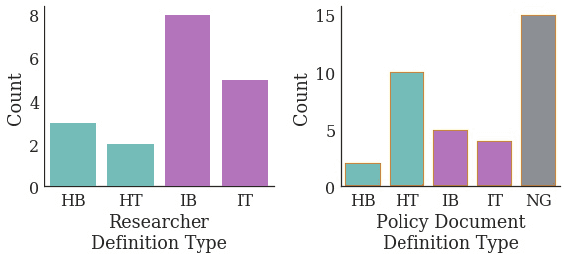
Abstract:Recent concern about harms of information technologies motivate consideration of regulatory action to forestall or constrain certain developments in the field of artificial intelligence (AI). However, definitional ambiguity hampers the possibility of conversation about this urgent topic of public concern. Legal and regulatory interventions require agreed-upon definitions, but consensus around a definition of AI has been elusive, especially in policy conversations. With an eye towards practical working definitions and a broader understanding of positions on these issues, we survey experts and review published policy documents to examine researcher and policy-maker conceptions of AI. We find that while AI researchers favor definitions of AI that emphasize technical functionality, policy-makers instead use definitions that compare systems to human thinking and behavior. We point out that definitions adhering closely to the functionality of AI systems are more inclusive of technologies in use today, whereas definitions that emphasize human-like capabilities are most applicable to hypothetical future technologies. As a result of this gap, ethical and regulatory efforts may overemphasize concern about future technologies at the expense of pressing issues with existing deployed technologies.
An Algorithmic Equity Toolkit for Technology Audits by Community Advocates and Activists
Dec 06, 2019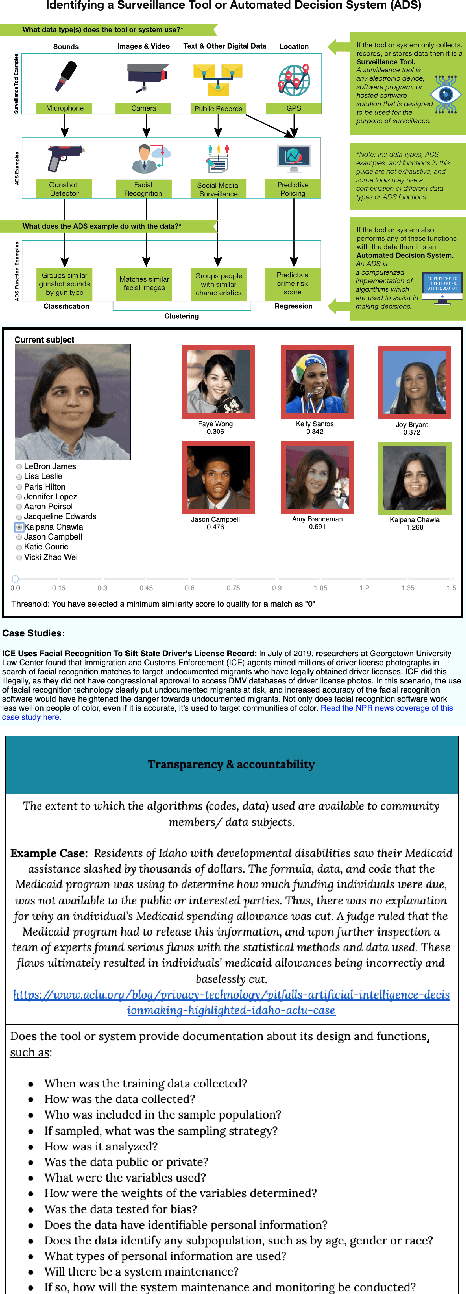
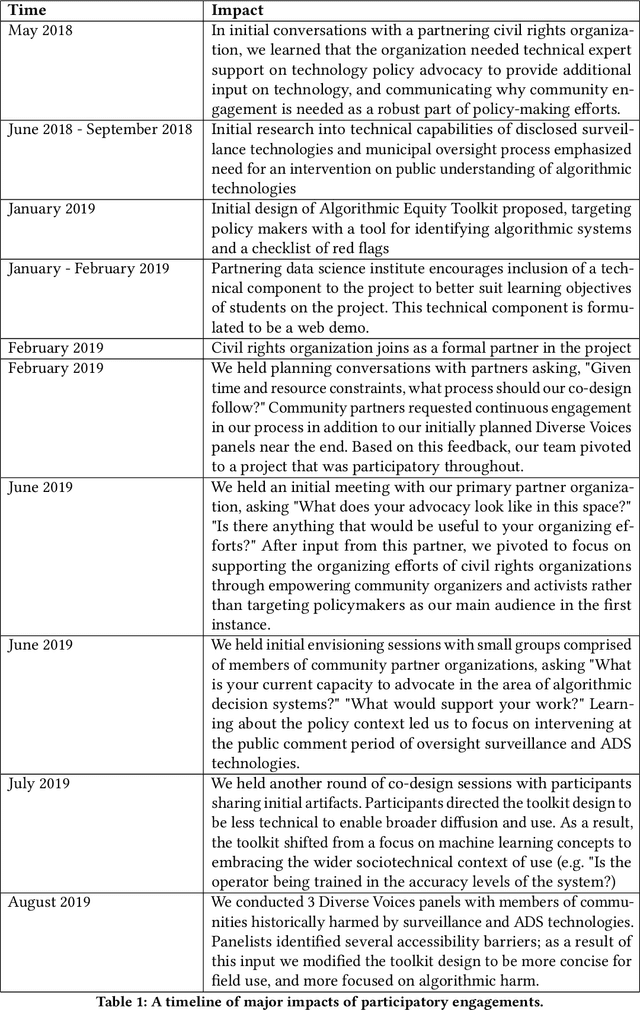
Abstract:A wave of recent scholarship documenting the discriminatory harms of algorithmic systems has spurred widespread interest in algorithmic accountability and regulation. Yet effective accountability and regulation is stymied by a persistent lack of resources supporting public understanding of algorithms and artificial intelligence. Through interactions with a US-based civil rights organization and their coalition of community organizations, we identify a need for (i) heuristics that aid stakeholders in distinguishing between types of analytic and information systems in lay language, and (ii) risk assessment tools for such systems that begin by making algorithms more legible. The present work delivers a toolkit to achieve these aims. This paper both presents the Algorithmic Equity Toolkit (AEKit) Equity as an artifact, and details how our participatory process shaped its design. Our work fits within human-computer interaction scholarship as a demonstration of the value of HCI methods and approaches to problems in the area of algorithmic transparency and accountability.
 Add to Chrome
Add to Chrome Add to Firefox
Add to Firefox Add to Edge
Add to Edge